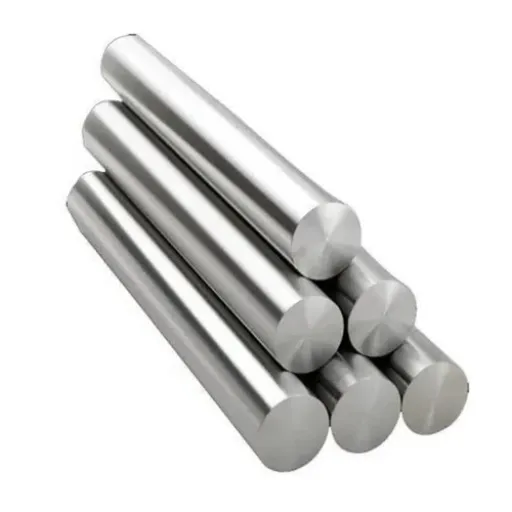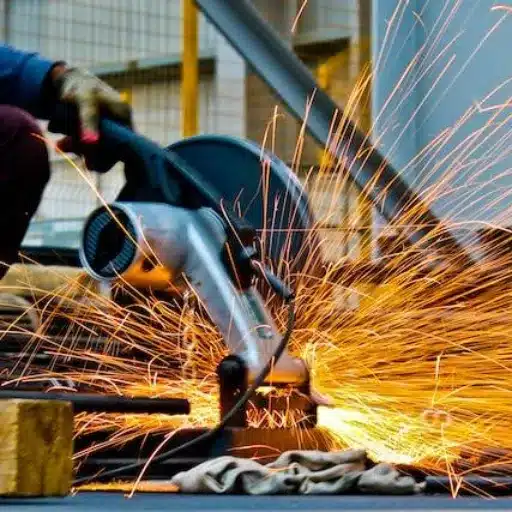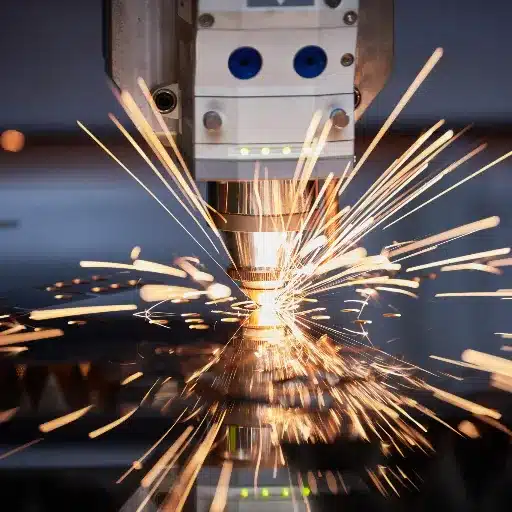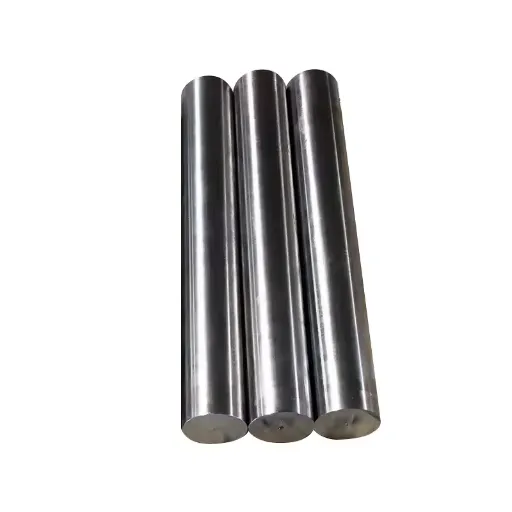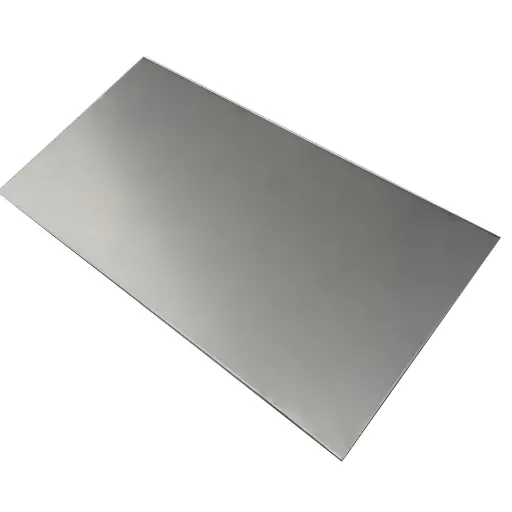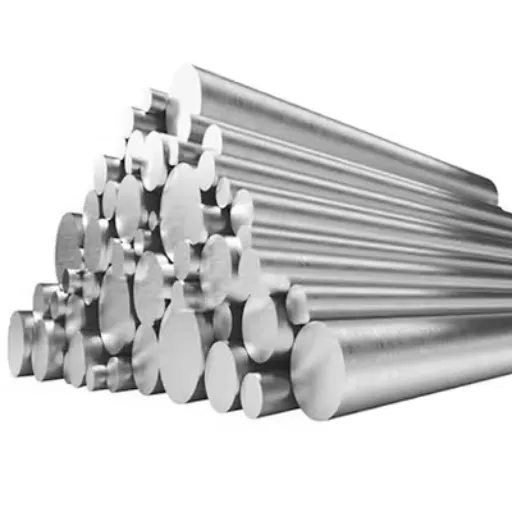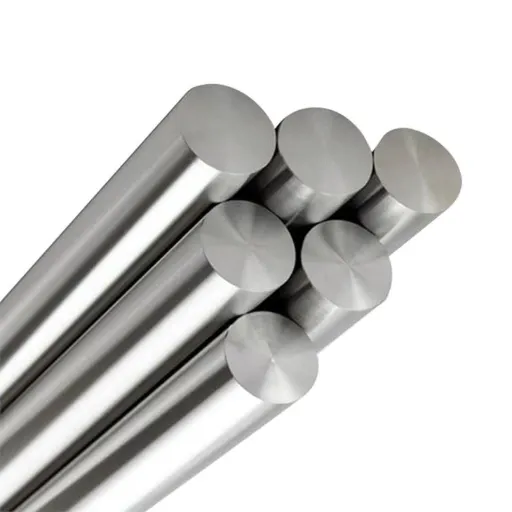Nickel-iron alloys have always been acknowledged as materials with great adaptability and peculiar characteristics, thus being a necessary part in many industries. Their importance is that they are a great issue in creating long-lasting, high-performing solutions from aerospace engineering to electronics manufacturing. But, what really makes these alloys of nickel and iron so necessary? We will reveal these alloys’ exceptional properties, enumerate theoccupations where they are most utilized, and consider the causes of their remaining the material for the most advanced innovations, in this article.
Introduction to Nickel Alloys
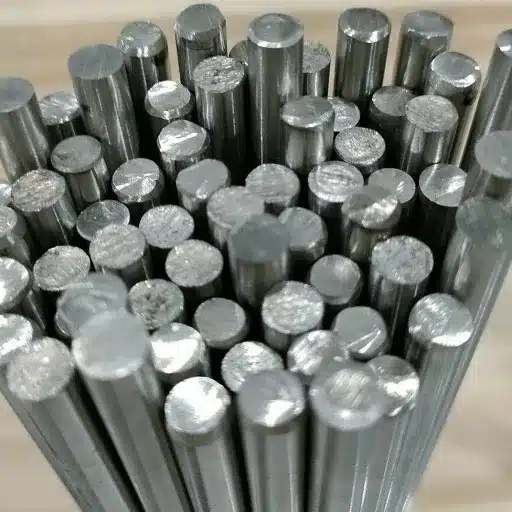
Nickel-iron alloys are a must-have due to their exceptional features of strength, durability, and magnetic properties. They perform excellently under extreme conditions like high temperatures and high corrosive environments, thus being a good fit in the areas of electronics, aerospace, and renewables in energy technologies.
What are Nickel Alloys?
Nickel alloys are a kind of metals primarily made up of nickel and often mixed with iron, chromium, copper, or molybdenum. The list of their properties includes the strength, resistance to corrosion, and the ability to high temperatures. Thus, they are used in many industries, some of which are even categorized as demanding. Nickel alloys contain typically from 30% to 99% nickel, the rest being alloying elements or impurities, depending on the specific characteristics desired and the end use.
Among the most prominent is the nickel-iron alloy, which possesses outstanding magnetic features and control of thermal expansion. Monel (nickel-copper) and Hastelloy (nickel-molybdenum-chromium) alloys are, for example, highly demanded in applications that deal with very harsh conditions, such as marine engineering and chemical processing.
Overview of Iron-Nickel Alloys
Iron-nickel alloys are the materials that link together the best properties of both iron and nickel. While thus, the alloys are highly applicable in many different trades, their biggest strength is in the specific technologies that cannot accept any drawbacks regarding the material’s performance such as resistance to high temperature and corrosion. The dominant industries that are using the particular materials are aerospace, electronics, and construction, where the alloys are guaranteed to be reliable even when facing extreme conditions.
Invar, an alloy with a remarkably low thermal expansion coefficient, is one of the most famous iron-nickel alloys. This property is what makes it a must-have in precision instruments like pendulums in clocks, scientific devices, and aerospace parts, where stability in size is most important. Iron-nickel alloys are also helping to take the stress out of the canal’s pipeline materials, thus brewing up the high-strength cases for pipeline products that are resistant to stress corrosion cracking.
Composition and Properties of Nickel-Iron Alloys
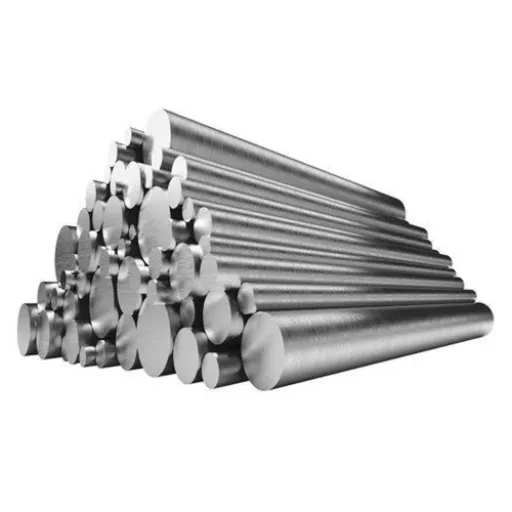
In my opinion, the filigree of iron-nickel alloys certainly has a place in our everyday life because of its outstanding features, for instance, the very low thermal expansion of Invar, the end user of which being precision instruments and aerospace applications. Moreover, the strength and corrosion resistance of these materials under stress point out to the pipelines as their new applications.
Chemical Composition of Iron-Nickel Alloys
The basic elements composing iron-nickel alloys are iron (Fe) and nickel (Ni). The percentage of these metals varies in the alloys according to the specific industrial application anticipated. Generally, the alloys have nickel ranging from 35% to 90% by weight, and the remaining is iron. Sometimes, trace elements like cobalt, manganese, or silicon are added to improve specific properties, such as magnetic performance or resistance to corrosion, which may not be accessible without such an addition.
A famous example is the brand “Permalloy,” which is a blend of about 80% nickel and 20% iron. This mixture provides very high magnetic permeability, so the alloy has become widely used in the electrical and electronic industries. A different kind is “Invar,” which has a typical nickel content of 36% and is strongly characterized by an extremely low coefficient of thermal expansion, thus becoming a preferred choice for precision tools, thermometers, and even structures in the aircraft that last long.
Mechanical Properties of Nickel Alloys
Nickel alloy is known for a remarkable mechanical property and thus, becoming the factor that most industries are of his need. Such properties include tensile strength, toughness, and resistance to creeping, stresses, and even fatigue, regardless of the environment being used. For example, turbine engine nickel-based superalloys can retain mechanical integrity even at 1800°F (980°C), which is the most crucial aspect of high-performance applications.
One important feature of nickel alloys is their strength-to-weight ratio. For instance, Monel or Hastelloy alloys’ tensile strengths would vary from 70,000 to 180,000 psi depending on their exact composition and heat treatment. Furthermore, their toughness to thermal expansion and mechanical deformation is in line with the requirements in sectors like aerospace, chemical processing, and power generation where precision is the utmost necessity.
Nickel-Iron Alloys Applications
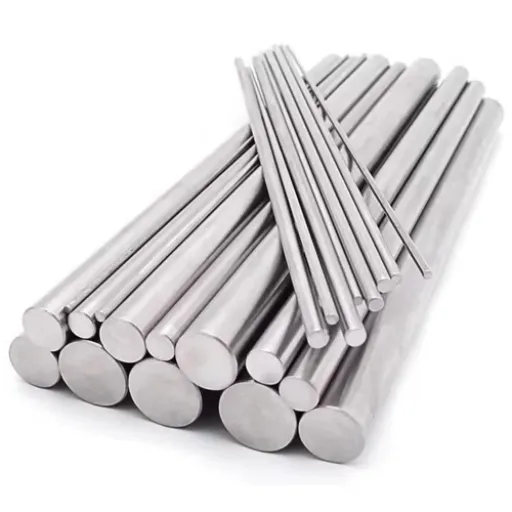
Nickel-iron alloys are deployed in a great variety of main uses because of their amazing magnetic properties, resistance to heat, and durability. I personally consider them as the most important in electronics as they are used in transformers, inductors, and magnetic shielding, besides, the aerospace and automotive industries employ them for high-temperature parts.
Magnetic Materials and soft magnetic alloys using
Nickel-iron alloys have been receiving high praises for their outstanding magnetic characteristics and this is what makes them so much needed across various industries. Alloys containing nickel mostly show the best permeability and lowest coercivity which results in the most efficient magnetic performance. The most famous of nickel-iron alloys is Permalloy composed of around 80% nickel and 20% iron. It is the high magnetic permeability of Permalloy that makes it an essential material for the production of transformers, inductors, and shielding of sensitive electronic devices.
In addition to that, nickel-iron alloys exhibit negligible energy loss when subjected to alternating magnetic fields which again is very important for energy saving. Research has found that soft magnetic alloys with nickel content of more than 80% have a saturation magnetization of around 0.8 to 1.6 Tesla depending on their grade and processing. These assets are instrumental in the development of contemporary power systems, electric cars, and high accuracy measurement tools.
Steel Making of Modern Production
Nickel-iron alloys are considerably involved in modern steel manufacturing especially in the development of advanced high-strength steels (AHSS) among others. The alloy in turn is responsible for developing the desired properties of steel, including such as tensile strength and ductility thus; these properties are very important in the automotive, aerospace, and construction industries. Besides, the latest developments have indicated that the use of nickel-iron alloys in steel making practices increases its resistance to factors like corrosion and temperature variations making it suitable for use in areas with extreme conditions.
As per the report from the World Steel Association, the demand for AHSS all over the world is increasing at the rate of around 7.8% per annum compounded, which is mainly due to the ongoing drive for car designs that are lighter and consume less energy. The use of nickel-iron alloys as a key material in the making of these steels not only assists in cutting down the weight of the vehicles but at the same time does not compromise on the safety aspect and hence a significant reduction in both fuel consumption and greenhouse gas emissions occurs.
Benefits of Nickel-Iron Alloys Over Other Materials
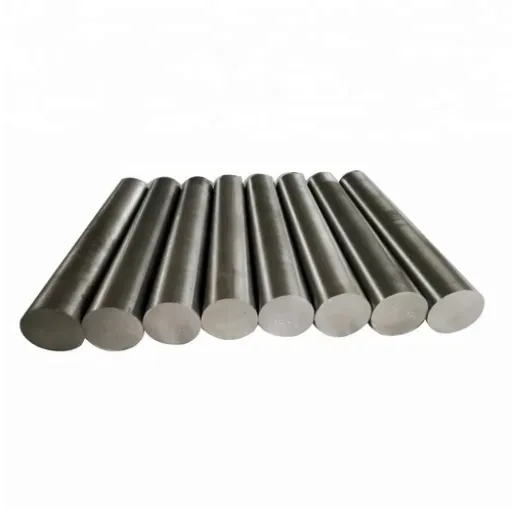
Advantages in Performance and Efficiency
Nickel-iron alloys have obvious advantages in performance and efficiency that are going on to be the major reason why they are more and more accepted in different industries. One of the main benefits is the fact that these materials possess very good magnetic properties, especially in the case of their grain-oriented varieties. These metals have very good magnetic permeability and very little core loss, which makes them perfect for transformers and high-efficiency electric motors. One good example is that the inclusion of nickel in some grades of electrical steel practically doubles their ability to conduct the magnetic flux, reducing operational energy losses up to 20-30% when compared to the usual silicon steels.
Moreover, beyond the availability of their magnetic characteristics, nickel-iron alloys have already been proven to possess favorable properties being thermal stability and corrosion resistance, which, in turn, helps to extend the lifetime of the components in the harsh environments. And this in turn leads to less maintenance thus higher system durability. Nickel-iron alloys use in the energy sector has increased the operational efficiency of power distribution grids by about 15%, according to data gathered from various industry reports. This has supporting the global sustainability goal and reducing the carbon footprint. These performance and efficiency benefits are the reason why nickel iron alloys remain a pivotal choice in developing modern engineering applications.**
Cost-Effectiveness and Sustainability
Nickel-iron alloys is not just a matter of their high-performance characteristics but also their cost-effectiveness and sustainability. The long product life of nickel-iron alloys means that metal replacement will be a lot less frequent and, therefore, significant savings will be made in the long run, particularly in large-scale industrial applications. Even more, nickel-iron alloys can often be recycled, which is a big reason for the already low material cost and the reduction of waste in the production processes.
As per the recent industry insights, the use of nickel-iron alloys in renewable energy technologies such as wind and solar has reduced the operational cost by up to 20% in some cases. Their ability to resist corrosion and extreme temperatures guarantees that such critical components as turbine cores and battery systems will be operated efficiently for a longer period of time, thus reducing the cost of both maintenance and energy losses. In addition, nickel-iron alloys are an essential part of the circular economy since they preserve all their characteristics even after several recycling processes, thus keeping the demand for raw material extraction and ecological impacts associated with it low.
Technological Advancements that are Recent
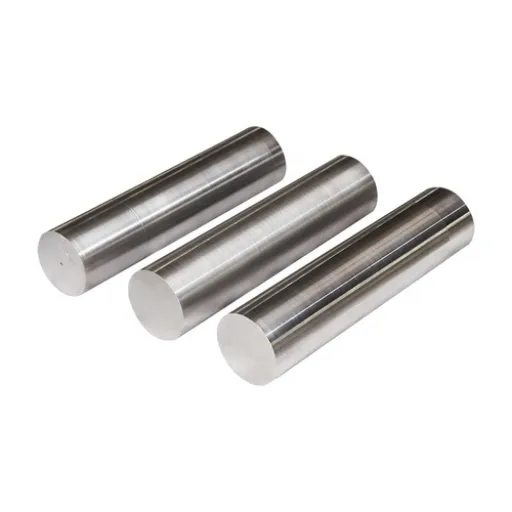
In my opinion, the recent technological advancements in nickel-iron alloys have greatly impacted the areas of industrial efficiency and sustainability. These alloys are not only the best among the harshest conditions but also being melted down for their recyclability, reducing the environmental impacts.
Production Techniques of Alloys that are Innovations
The alloy production techniques that are newly invented in the past few years have completely changed the world of metallurgy with an emphasis on making processes more efficient, bettering material properties, and causing less harm to the environment. One of the breakthroughs is the use of high-entropy alloys (HEAs) which are made of five or more principal elements in almost equal ratios. The rare composition provides it with very high mechanical strength, resistance to corrosion, and stability in high temperatures; hence, HEAs are considered as very important in the aerospace, automotive, and power generation sectors.
Another remarkable method is additive manufacturing (AM), which is also known as 3D printing that has brought major changes in the alloy designing and manufacturing process. The AM process involves the use of laser sintering and electron beam melting where manufacturers can come up with the alloy parts of complex shapes with little waste. An example is that the studies have shown that applying AM in the production of nickel-titanium alloys leads to a reduction of 70% in the wastage of materials but at the same time it improves the product’s performance due to the microstructure control being really precise.
Aerospace and Energy Sectors Emerging Applications
The fusion of the more advanced alloys into the aerospace and energy sector is the primary reason behind the revolutionary innovations. Light yet strong alloys like titanium-aluminum and nickel-based superalloys are becoming the must-have materials for the production of the next-generation aircraft and spacecraft. Recent studies have shown that these materials not only save fuel by lightening the overall weight but also last longer, which is a very important aspect when it comes to extreme temperatures and pressures in space and high-altitude conditions.
Modern alloys are making the production and storage of energy more efficient in the area of energy. Wind turbines, for example, use a lot of advanced steel and aluminum alloys for their blades and structures to bear the environment’s roughness for a long time. The recent statistics show that the changes in alloy compositions have resulted in an increase in wind turbine efficiency by almost 15%, thus reducing the costs of maintenance over time. Also, the nickel-cobalt alloys are the heart of the very powerful batteries for the storage of renewable energy, which is serving the increasing demand for eco-friendly energy solutions.
Reference Sources
-
Future Market Report
This source provides insights into the market size, growth, and applications of nickel iron alloys, highlighting their importance across various industries.
Link to source -
DataIntelo Market Report
This report offers a detailed analysis of the global nickel iron target market, including projections and industry trends, making it a credible reference for understanding the market’s feasibility.
Link to source -
Markets and Markets Report
This source discusses the end-use industries and functions of nickel alloys, providing a comprehensive overview of their applications and demand in sectors like aerospace, energy, and automotive.
Link to source
Frequently Asked Questions (FAQs)
Nickel iron (NiFe) alloys, their main constituents, and what are they?
Nickel iron alloys are commonly referred to as NiFe alloys, which are a kind of group that consist mostly of two elements, nickel, and iron. Furthermore, these ores are recognized by their excellent magnetic traits that spot high permeability and low resistivity, thus allowing them to be used in a great number of cases, mainly electronics and magnetic materials.
Nickel alloys versus other metal alloys?
Nickel alloys have a higher resistance to chemical attack and high temperature oxidation reactions, which is one of the main factors that distinguish them from the other metal alloys. Besides, their super mechanical properties to a certain extent, their use in such harsh environments as gas turbine engines and heat exchangers is practically inevitable.
The use of soft magnetic alloys like nickel iron comes with what advantages?
The use of soft magnetic alloys such as nickel iron provides high initial permeability, which means they can be easily magnetized and demagnetized. This property is very much needed in transformers and inductors that require very efficient magnetic performance to function.
The expansion coefficient in nickel iron alloys has what importance?
The expansion coefficient is a factor that matters in nickel iron alloys since it indicates the amount of the material that will be expanded or contracted due to temperature changes. These alloys possess very low temperature expansion coefficients which make them very beneficial in such cases where dimensional stability is crucial under constantly changing thermal conditions.
Nickel iron alloys under high temperature conditions how do they work?
Nickel iron alloys are still performing very well mechanically even at very high temperatures like 600°C. Their heat resistance property allows them to be used in reactors and gas turbine engines where high operational temperatures are a common occurrence.
Are there any naturally forming nickel iron alloys?
Kamacite and taenite are examples of naturally occurring nickel iron alloys that can be found in iron meteorites. Their main composition consists of nickel and iron, thus their resemblance to artificial nickel iron alloys both in composition and properties.

